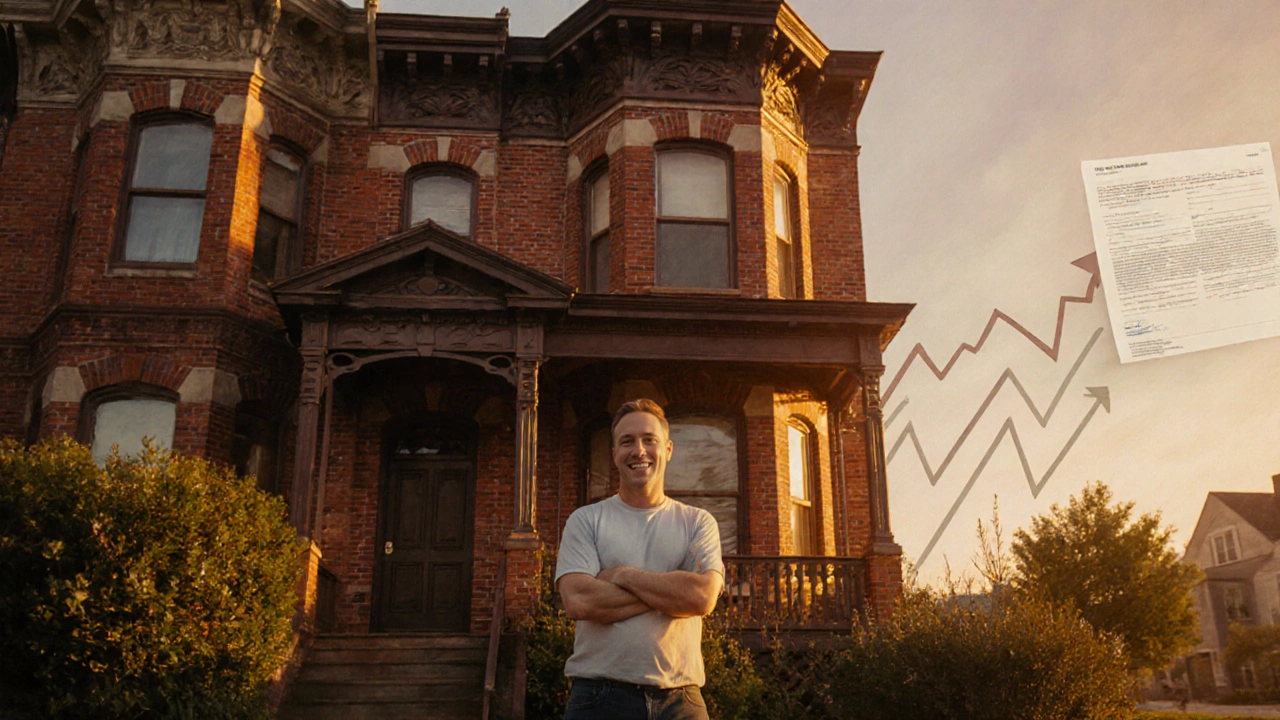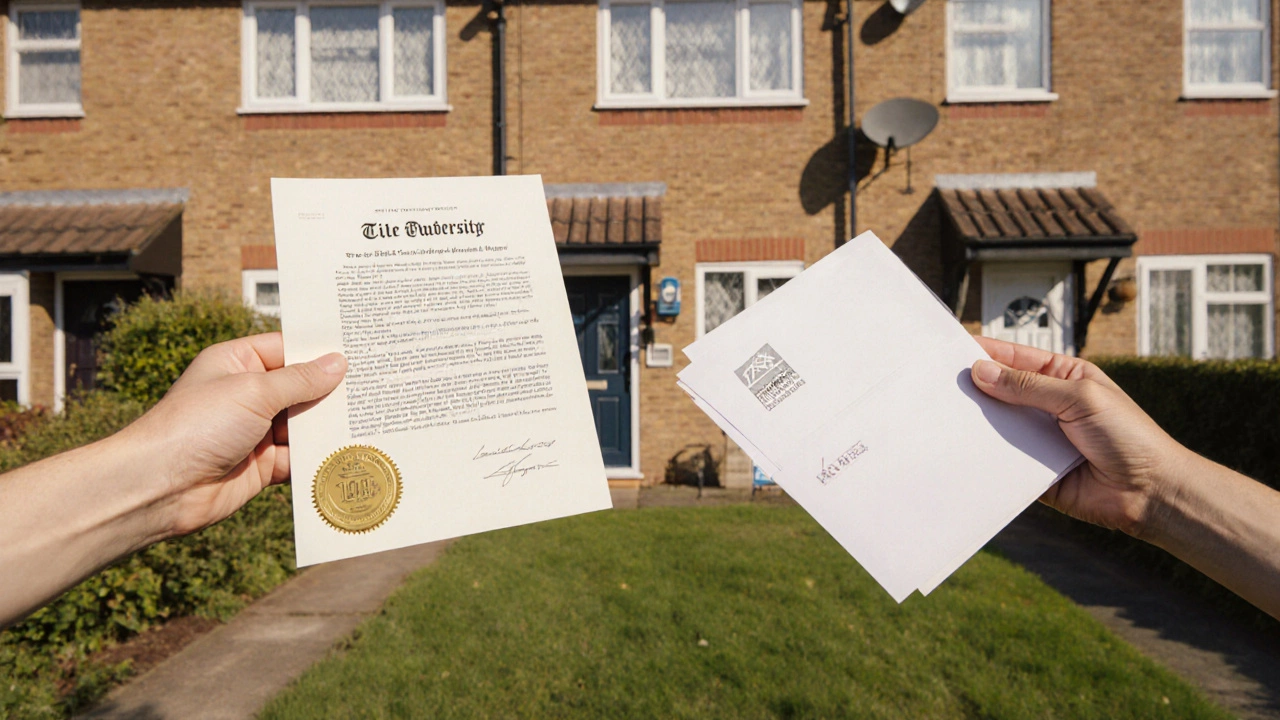Shared Ownership Cost Calculator
Calculate the costs and benefits of moving from a shared ownership share to 100% ownership. Input your current situation and see estimated costs, savings, and how it affects your monthly budget.
When you hear the phrase "100% ownership" in a shared‑ownership context, you might wonder whether it means you own the whole house outright or something else entirely. The short answer is that you hold the full legal title to the property, just like anyone who buys a house with a regular mortgage. The longer answer explains how that ownership fits into the world of shared‑ownership schemes, what legal and financial steps are involved, and why it matters for your long‑term housing plans.
What is 100% ownership?
100% ownership is a state where the buyer holds the entire legal title to a property, without any remaining equity share owned by a housing association or developer. In plain English, you own the building, the land it sits on, and you can sell, remodel, or refinance it without needing anyone else’s permission (aside from any mortgage lender). This contrasts with the typical shared‑ownership model where you buy a percentage-often between 25% and 75%-and pay rent on the rest.
How does it differ from shared ownership (partial ownership)?
Shared ownership is a scheme that lets you buy a share of a home while the remaining share stays with a housing association, which you then rent from. The key differences are:
- Legal title: With 100% ownership, the title is in your name alone. With shared ownership, the title is split between you and the housing association.
- Rent payments: Full owners pay no ground rent. Partial owners pay rent on the unsold share, typically calculated as a percentage of the market rent.
- Staircasing: Partial owners can buy additional shares over time-a process called staircasing-to eventually reach 100% ownership. Until then, they remain partial owners.
- Resale: Full owners can sell the entire property on the open market. Partial owners must first offer the share back to the housing association, then may sell the remainder.
Legal structure: freehold vs leasehold
In the UK, most shared‑ownership homes are sold as leasehold properties. When you move to 100% ownership, you often have the option to keep the leasehold arrangement or to buy the freehold, depending on the development.
Freehold is a form of ownership where you own both the building and the land outright, forever. Leasehold gives you the right to live in the property for a set number of years-commonly 99 or 125-while the land remains owned by a landlord, often the same housing association.
If you buy 100% ownership in a leasehold home, you’ll inherit the existing lease. You can later purchase the freehold if the lease term drops below a comfortable level (usually 80 years), but that involves a separate legal process and cost.
Financial implications
Going from a shared‑ownership share to full ownership changes several cost items.
- Mortgage: You’ll need a mortgage that covers the full purchase price, not just the share you already own. Lenders often view 100% ownership as lower risk, so you might get a better rate.
- Stamp duty: When you first bought the share, you paid stamp duty on that portion. Moving to 100% means you’ll pay stamp duty on the remaining market value, but the first‑time buyer relief may still apply if you qualify.
- Equity build‑up: Each staircasing step adds to your equity. At 100%, you own 100% of the market value, which can boost borrowing power for future moves.
- Ground rent: Once you own the whole property, the rent you paid on the unsold share disappears, freeing up cash each month.
- Service charges: You’ll still pay any building service charges, but they’ll now be entirely your responsibility.
Steps to achieve 100% ownership
Moving from a shared‑ownership share to full ownership is a multi‑stage process. Here’s a practical roadmap:
- Check your lease length: Ensure there are at least 80 years left; otherwise, consider buying the freehold early.
- Get a valuation: A professional valuer will confirm the current market value of the whole property.
- Speak to your housing association: Request the “staircasing” price for the remaining share. This is typically the market value minus a discount (often 10-15%) that the association offers.
- Arrange financing: Speak to your mortgage broker about a further loan or a remortgage to cover the purchase price of the remaining share.
- Legal conveyancing: Hire a solicitor or licensed conveyancer to handle the transfer of the remaining share into your name.
- Complete the purchase: Sign the contracts, pay the balance, and your solicitor will register the new title with the Land Registry.
- Update insurance: Notify your home insurer that you now own the entire property; adjust the sum insured if needed.
Pros and cons of 100% ownership
Pros
- No rent on any portion of the house.
- Full control over alterations, extensions, or subletting.
- Easier to sell on the open market.
- All equity stays with you, which can improve retirement planning.
Cons
- Higher mortgage and stamp‑duty costs at the point of staircasing.
- Potentially larger monthly repayments if the new mortgage rate is higher.
- Responsibility for full maintenance and any future service charge increases.
- If the property value falls, you own the downside as well as the upside.
Common misconceptions
People often mix up a few ideas around 100% ownership:
- My rent will disappear automatically. - The rent stops only after the legal transfer of the remaining share; you still need to pay the mortgage and any service charges.
- I can’t sell until I’ve reached 100%. - You can sell a partial share, but the housing association usually has a right of first refusal.
- Staircasing is always expensive. - While you do pay the market price for the rest, the association typically offers a discount that can make it cheaper than buying a new home at market rates.

Checklist before you commit to full ownership
- Confirm your lease has at least 80 years remaining.
- Get a recent independent valuation of the whole property.
- Request the staircasing price from your housing association and compare it with market listings.
- Calculate the total cost: remaining share price, stamp duty, legal fees, and any mortgage arrangement fees.
- Check your current mortgage terms; see if a remortgage offers a better rate for the higher loan amount.
- Ensure you have enough cash reserves for moving costs and a buffer for unexpected repairs.
- Speak to an insurance broker to adjust your coverage after the transfer.
Frequently Asked Questions
Can I become a 100% owner immediately after buying a shared‑ownership share?
No. You start with a percentage share. To own the whole property you must purchase the remaining share from the housing association, a process called staircasing.
Do I still have to pay service charges after I own 100%?
Yes. Service charges cover communal areas, building insurance, and maintenance. Once you own the whole property, you are responsible for the full amount.
Is stamp duty lower for the remaining share?
You pay stamp duty on the market value of the part you are buying now. If you qualify as a first‑time buyer, you may still get relief on the remaining portion.
Can I switch from leasehold to freehold after I reach 100%?
Yes, but you must follow the collective enfranchisement process, which involves legal fees and a purchase price for the land. It’s worth doing when the lease falls below 80 years.
Will my mortgage rate change after staircasing?
It can. If you need a larger loan or a new product, the rate may differ. Talk to your lender early to lock in a favorable rate.
Comparison: 100% Ownership vs Shared Ownership (Partial)
| Aspect | 100% Ownership | Shared Ownership (Partial) |
|---|---|---|
| Legal title | Entire title in buyer’s name | Title split between buyer & housing association |
| Rent | No ground rent | Rent on the unsold share (usually 2-3% of market rent) |
| Equity growth | All appreciation stays with owner | Only the owned share appreciates; rest stays with association |
| Staircasing | Not applicable | Option to buy additional shares over time |
| Resale flexibility | Sell on open market freely | Must offer share back to association first |
Understanding these points helps you decide whether moving to full ownership suits your financial goals and lifestyle. If you value complete control and can manage the higher mortgage cost, 100% ownership may be the right step. If you prefer lower upfront costs and are comfortable sharing some responsibilities, staying at a partial share might work better.


Corbin Fairweather
I am an expert in real estate focusing on property sales and rentals. I enjoy writing about the latest trends in the real estate market and sharing insights on how to make successful property investments. My passion lies in helping clients find their dream homes and navigating the complexities of real estate transactions. In my free time, I enjoy hiking and capturing the beauty of landscapes through photography.
view all postsWrite a comment